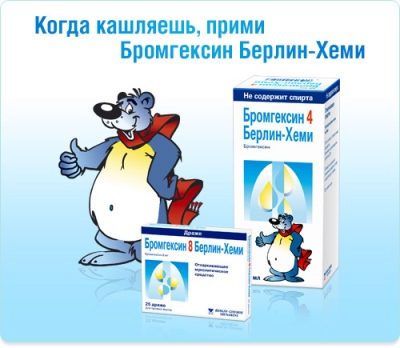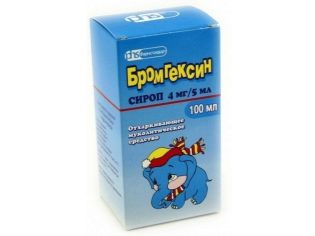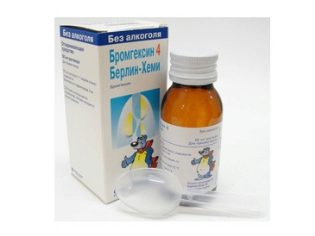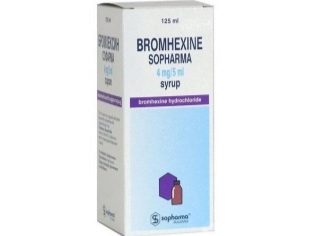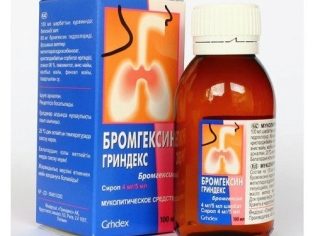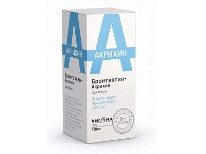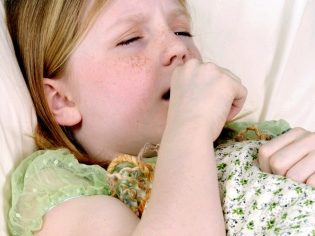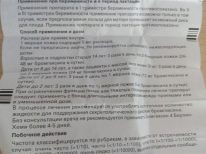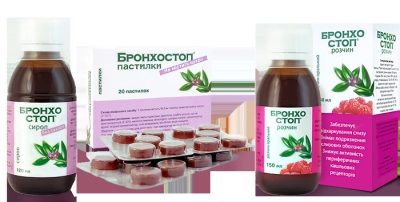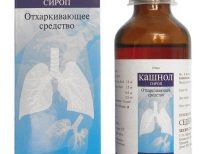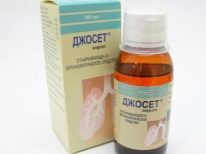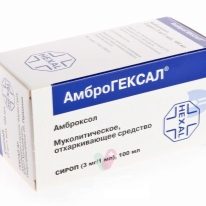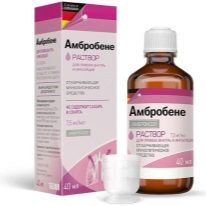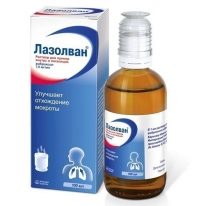Bromhexin syrup for children: instructions for use
Bromhexine is one of the popular drugs prescribed for diseases of the respiratory system. If the medicine containing bromhexine is prescribed to children, then its liquid forms, such as syrup or solution, are preferred. Such Bromhexine is produced by many pharmaceutical companies. From what age is it permissible to use it, is it possible to give this medicine for up to a year, how to dose Bromhexine syrup correctly and how can it be replaced if necessary?
Manufacturers and release form
Bromhexine for children in liquid form is represented by such drugs:
- Solution of the German production "Bromheksin 4 Berlin hemi". This apricot clear solution is sold in bottles of 60 and 100 ml. Each 5 ml of the drug give the patient 4 mg of bromhexine.
- Syrup, which produces the Russian company Pharmstandard leksredstva. 5 ml of this medicine contains 4 mg of the active compound, and one package contains 100 ml of syrup.
- The solution from the domestic manufacturer Atoll. This is an ingestible liquid with the content of the active ingredient in 5 ml of solution in a dose of 4 mg. The drug is presented in bottles of 60 and 100 ml.
- Syrup from the Russian manufacturer Rosepharm. It is available in two dosages (4 mg and 8 mg of the active ingredient) and poured into vials of 50 and 100 ml.
- Solution from the Indian company Simpex Pharma. This product contains 4 mg of active compound per 5 ml and is sold in bottles of 100 ml.
- Syrup from the Latvian company Grindex. This medicine contains 4 mg of the active ingredient in 5 ml of syrup and packed in 100 ml bottles.
- The solution, which produces the company Nycomed from Denmark. The concentration of the active ingredient in this medicine is 4 mg per 5 ml. Bottles with a solution are presented in different capacities - 60, 100 and 150 ml.
- Bromhexin-Akrikhin syrup. It is represented by a bottle of 100 ml containing 4 mg of active substance for every 5 ml of the preparation.
Composition
The main component due to which any Bromhexine has a healing effect is Bromhexine hydrochloride.
Auxiliary substances from different manufacturers differ, so they should be clarified in the annotations to a specific drug, especially if the child has an intolerance to any substances or a tendency to allergies.
For example, a syrup may include flavoring agents, sorbitol, hydrochloric acid, propylene glycol, ethanol, and other compounds.
Operating principle
Bromhexine is referred to as drugs with a mucolytic effect, since its main component dilutes the mucoprotein and mucopolysaccharide fibers in sputum. As a result of this action of bromhexine, the viscosity of the sputum decreases, and its volume increases. This causes the expectorant effect of the drug, through which the drug helps to get rid of cough. Bromhexine also has the ability to improve the formation of surfactant.
Indications
Pediatricians prescribe Bromhexine for pathologies of the respiratory system, in which a viscous and difficult to separate secret is formed in the bronchi.
The drug is in demand for:
- Acute bronchitis.
- Chronic bronchitis.
- Pneumonia.
- Tracheobronchitis.
- Bronchiectasis.
- Bronchial asthma.
- Cystic fibrosis.
- Tuberculosis.
At what age is it allowed to take
Pediatricians prescribe Bromhexine from birth, but without a specialist's control, it is impossible to give such medicine to children in the first two years of life. Bromhexine for a baby aged 6 months or 1 year must be prescribed only by a doctor.
Contraindications
The drug should not be given to children with hypersensitivity to any of its ingredients. Also Bromhexine in syrup is not used in the exacerbation of peptic ulcer. If a child has liver or kidney problems, the appointment of Bromhexine requires the increased attention of the doctor.
Side effects
- Taking Bromhexine syrup may cause dyspepsia symptoms, as well as temporarily increase the activity of liver enzymes.
- The medication sometimes causes dizziness as well as headache.
- The result of treatment with Bromhexine is the appearance of a rash on the skin, as well as increased sweating.
- The respiratory system in rare cases can respond to the drug with bronchospasm or increased cough, so in asthma Bromhexine is prescribed very carefully.
Instructions for use
Bromhexine is taken orally at this single dose:
Children under 2 years | 2 mg |
Children aged 2-6 years | 4 mg |
Children 6-10 years old | 6 to 8 mg |
Children over 10 years old | 8 mg |
If the doctor sees the need, it can increase this single dose to 16 mg.
The drug is drunk three times a day. Meals on its absorption do not affect, so this drug can be taken both after meals and during or before meals.
The duration of use is determined individually, but the minimum time for receiving Bromhexine is 4 days, and the maximum - 4 weeks.
Instructions for the drug "Bromhexin 4 Berlin Hemi":
Overdose
An excessively large dose of Bromhexin syrup provokes nausea and other digestive problems. If overdose is detected within 1-2 hours after taking the medicine, it is recommended to induce vomiting and give the little patient more liquid.
Interaction with other drugs
Bromhexin treatment can be combined with the use of bronchodilators, antibacterial and many other means. It is not recommended to combine this medicine with medicines that inhibit the cough reflex. In such a combination of drugs the children's body can respond to stagnation of mucus in the airways.
Terms of sale
Bromhexine preparations in the form of a solution or syrup are sold in a pharmacy as over-the-counter drugs. The price of Bromhexine depends on the manufacturer, for example, 60 ml of a solution from Berlin-Chemie costs about 170 rubles, 100 ml of syrup from Grindeks costs 130 rubles, and 150 ml of a solution of Bromhexine Nicomed must be paid on average 150 rubles.
Storage conditions and shelf life
The place where Bromhexin syrup should be stored should be dry, hidden from small children and from sunlight. The shelf life of the drug may be 3 years or more, provided that the drug is not opened. If the bottle is opened, such a period of liquid Bromhexine can be reduced, so this information should be clarified from the annotation to a specific drug.
Reviews
Parents who gave Bromhexine in syrup to children with a dry cough caused by increased viscosity of sputum, noted the high effectiveness of this tool. In their reviews, they confirm that the cough after taking Bromhexine becomes more productive and it helps to recover faster.
Mothers note that the drug is tolerated mostly well, and the taste of syrup does not cause aversion in most children.
Digestive problems and allergies to Bromhexine, judging by the reviews, are very rare. If a child has dyspepsia, then after the abolition of the medication, all negative phenomena quickly pass.
Analogs
Bromhexin can be replaced with Bronkhostop or Bronchotil medication. The main component of such syrups is bromhexine, which contains 4 mg per 5 ml of each agent.
A pediatrician may also prescribe multicomponent medications, including Bromhexine, for example, syrups. Ascoril, Kashnol or Joset. The composition of these medicines includes a combination of bromhexine and salbutamol, supplemented with guaifenesin and menthol.
A good substitute for Bromhexin is ambroxol-based drugs, for example, Ambrohexal, Ambrobene or lazolvan. Also, vegetable syrups containing extracts from ivy, plantain, althea, licorice, thyme, primrose and other plants can be prescribed for coughing a baby.

